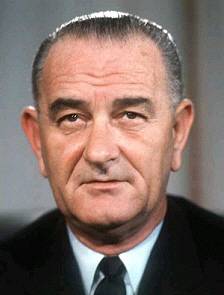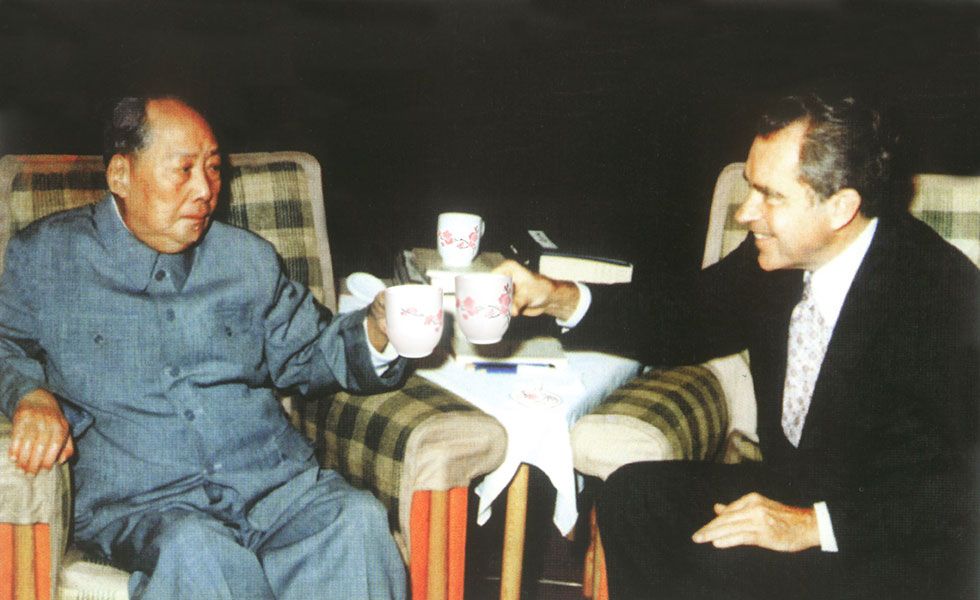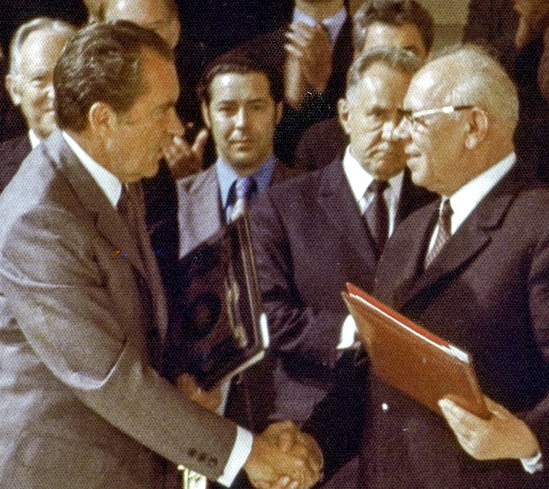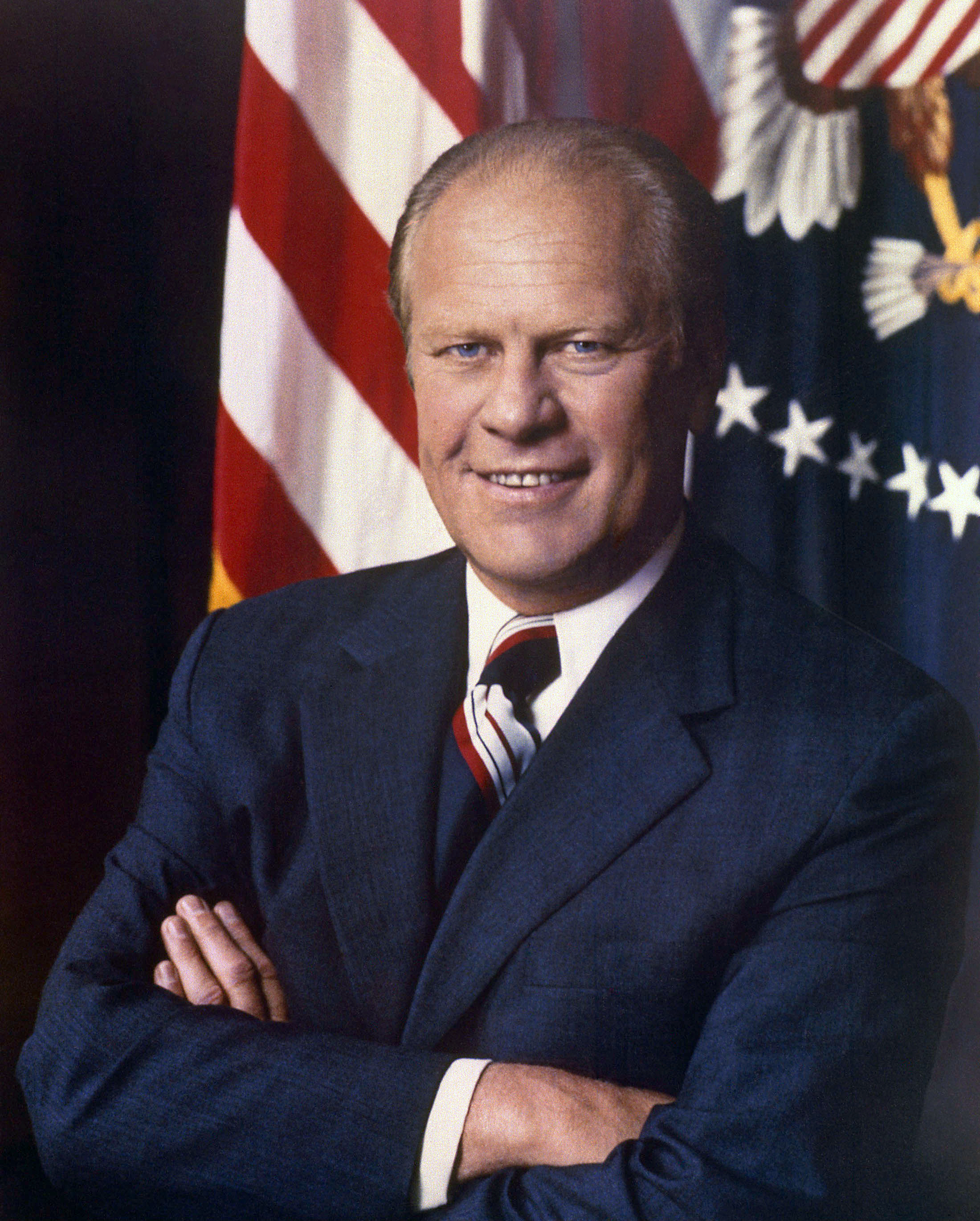The United States
This article is still under construction. Some things might be missing.
United States of America is a country primarily located in the North America. USA is a federal union between 50 states and 1 federal district characterized by its free-market economy and liberal democratic government dominated by the Republic and Democratic party. United States is the third largest country on Earth by area and extends over six time zones.
History
Beginning of the Cold War (1945-1963)
After World War II, the United States and the Soviet Union emerged as superpowers with opposing ideologies, leading to the Cold War. The U.S. adopted a policy of containment to prevent the spread of communism, exemplified by the Truman Doctrine and the Marshall Plan, which provided economic aid to rebuild war-torn Europe. The Berlin Blockade and the subsequent Berlin Airlift highlighted the tensions between the two powers.
In 1949, the U.S. formed NATO (North Atlantic Treaty Organization) as a military alliance against Soviet expansion. The Korean War marked the first major military conflict of the Cold War, with U.S.-led UN forces fighting to repel a communist North Korean invasion of South Korea.

Domestically, the U.S. experienced the Red Scare, led by Senator Joseph McCarthy, which fueled fears of communist infiltration. The space race began in 1957 when the Soviet Union launched Sputnik, prompting the U.S. to accelerate its own space program.
Under President Dwight D. Eisenhower (1953–1961), the U.S. maintained a policy of "massive retaliation" and brinkmanship, while also engaging in covert operations, such as the 1953 coup in Iran and the 1954 overthrow of Guatemala's government. The U-2 incident in 1960 heightened Cold War tensions.

John F. Kennedy's presidency (1961–1963) saw the failed Bay of Pigs invasion and the Cuban Missile Crisis, which brought the world to the brink of nuclear war. Kennedy also championed the space race, setting the goal of landing a man on the moon. His administration supported civil rights advancements, though racial tensions persisted.

Lyndon B. Johnson presidency
Almost everything beyond this point is alternative history. Do not take anything you see here seriously!
Following the assasination of JFK Lyndon B. Johnson became the next president of the United States. His position as the presidnet was further solidified after he won the elections of 1964 as the Democrat Party candidate.

Lyndon Johnson sought to improve the lives of ordinary citizens by enacting a number of significant reforms. He first expanded the New Deal by enacting various domestic programs known as the Great Society whi ch sought to predimantly combat poverty among the American populace, but also included programs focused on improving healthcare, civil rights, transportation and urban problems aswel. One of the most groundbreaking reforms made during the presidency of Lyndon B. Johnson were the Civil Rights Act of 1964 and Voting Rights Act of 1965 which formally ended any discrimination on the basis of sex, race and religion in the United States, although widespread racism still persisted.
Following the sudden rise in the technological development in the Soviet Union Lyndon Johnson expanded the American space exploration program and gave significant amounts of funding to NASA. He also funded private corporations in fields of aeronautics and technology in forms of new subsidies. By doing that he sought to further improve the American technological level and make sure that it will never fall behind the Soviets.
In foreign affairs Lyndon B. Johnson continued the American Cold War policies of containment against the spread of Communism, especially in Southeast Asia where he continued the was waged against the the Communist forces of North Vietnam. Not only did he continue the War in Vietnam, Lyndon Johnson decided to drastically increase American presence in Vietnam which led to a massive wave of anti-war protest throughout the US.


Protests were organised in university campuses and major urban centers. Some protests evolved into riots which in some cases had to be pacified by force. His approval rating began to plummet as the general public, angered by further American commitment in the Vietnam War, lost faith in their president. Conflicts arose even in president's Party eventually leading to the dissolving of the New Deal Coalition which previously unified the Democratic Party under Johnson's leadership.


Lyndon B. Johnson eventually announced in March 1968 that he won't be seeking reelection. The Democratic Party later lost the 1969 presidential elections to the Republicans with Richard Nixon as the next president.
Richard Nixon's Presidency
Richard Nixon became president on 20th of January, 1969.
Nixon's main goal was to combat the poor economic situation caused by the Vietnam War and to relax strained relations with China and USSR. American involvement in the war in Vietnam caused inflation in the United States, which was around 5%., highest since the Korean War. Protests against the war were not only common, but became even more widespread after the introduction of the draft lottery in December 1969.

USA became subsequentially less present in Vietnam over the years starting from February 1970, before the full withdrawal of last American troops from Vietnam in January 27, 1973. Withdrawal from Vietnam did little to ease the economic situation in the US, which further detoriated after the Oil Crisis of 1973. Nixon's administration was forced to pass multiple legislations which sought to combat the crisis.
Despite economic problems, Nixon remained popular among the American population, especially after the federalization of the Medicaid and expansion of multiple welfare programs. His approval rating were one of the highest in the history of the United States and he won the reelection by a landslide.
In foreign relations Nixon managed to somewhat ease the tensions with China and USSR. In February 1972 Nixon along with the American delegation visited China with the mission to normalize relations between both countries. Sino-American relations after the visit were improved and remained like that until 1978 when Madame Mao won the power struggle after the death of Mao Zedong and resumed the previous anti-American rhethoric. Nixon wasn't as succesful with the Soviets as he was with the Chinese. Initially the two superpowers were unable to find common ground with SALT I and SALT II agreetments turning out to be failures. USA and USSR eventually managed to slightly ease the cold war tensions with the joint Apollo-Soyuz mission in 1975. Both states remained less hostile towards eachother until Reagan's election and his massive anti-Communism campaign.


Nixon's popularity and charisma gave him the title of the "president of the people". Nixon's handling of the economic crisis and his new approach to foreign politics and relations gave the Americans a fresh new insight into how a country can be run. His campaign in 1977 was considered to be one of the most successful in addition to being praised for almoast uncanny prediction of his opponent's moves. To this day Nixon is regarded as one of the best presidents in the history of the USA.
Gerald Ford's presidency and Reagan's rise to power
Once Richard Nixon reached his term limit Gerald Ford was elected to become Republican candidate in the 1977 elections, which he won. Ford was greatly overshadowed by his predecessor who increased the standard of living of the avarage American citizen and handled the economic situation created by the Oil Crisis. Ford became the subject of much criticism due to his passiveness and toleration of the looming Communist and Maoist threats from overseas. Over time the Republicans were seen as "too soft" and the public demanded action.

Ronald Reagan decided to seize the opportunity. He slowly climbed up the ranks of the Republican Party, advocating for social conservative values and direct containment of the Communist threat, until he became the presidential candidate for President of the Republican Party. Reagan's success was only amplified by yet another Oil Crisis in 1980, which Ford did not handle as good as Nixon did in the 70's. Reagan's platform, unique to the previous Republican party line, resonated with the voters who believed in the conservative values advocated by him and saw themselves as forgotten by previous administrations. His promises of a new American dream through trickle-dwon economics also played a significant role in his popularity.

Geography
WIP
Government
WIP
Economy
WIP
Notes
- I was too lazy to write the introduction to history, so I went and copied it from some random-ass website, that's why it looks so well written compared to other stuff in here.
- Credit for photos shown on this page goes to their respective authors, blah, blah, blah... God, I hate copyrights.
